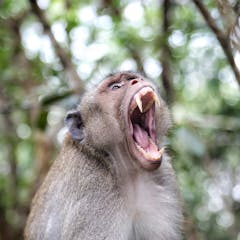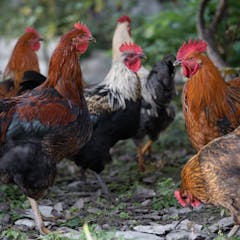
Articles sur Animal behaviour
Affichage de 1 à 20 de 199 articles

Some of the most caring animal fathers are insects.

The evolutionary reason it’s so difficult to ignore a cat pleading for food.

For dolphins, childish play may be useful practice for adult life.

A scientist who wanted to show pigeons don’t need intellect to navigate was surprised by nuances in his own study findings.

For most people, there’s a strong ‘awe’ factor when witnessing inter-species bonding. What is it about our own psychology that prompts this?

It may not be obvious to the human ear but birds of the same species sing in different dialects.

Pets’ bad behaviour can place owners under a lot of strain, research shows.

It’s certainly an exciting time to study communication in whales and dolphins.

And why earthworms are careful to select a mate of the same size as themselves.

People often think about how it’s good for children to have a pet dog around. But what about the dog?

Hermit crabs have been using plastic waste such as bottle tops as homes instead of empty snail shells.

Tourists can do a number of things to avoid dangerous encounters with monkeys.

Artificial intelligence can process large amounts of chicken vocalizations, identifying patterns in the birds’ communications.

Surveys on cat personality are filled out by people. As such, results are affected by human perspectives, projections and biases.

An expert on why spiders are misunderstood and their fascinating survival strategies.

Not all animals retreat to their shelters in cold weather.

There hasn’t been a lot of research into adult cat play, but a new study shows it’s not just dogs who like to play fetch.

Scientists have long been baffled by how seabirds decide where to go on their long journeys. Our study of wandering albatrosses offers new clues.

Rapidly changing temperatures and sensory environments are challenging the nervous systems of many species. Animals will be forced to evolve to survive.

Birds’ nest-building skills are informed by their environment and experiences, and nests can reflect the individual styles of their builders.
